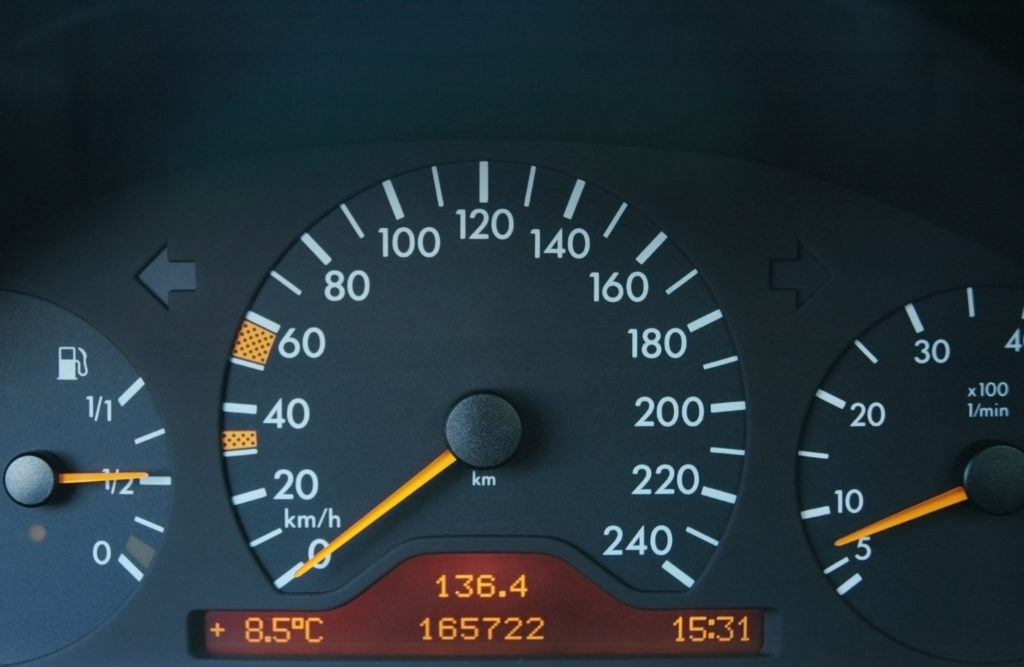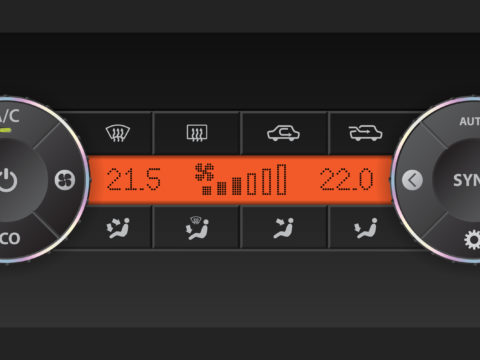A gas gauge not working can be a major inconvenience. This can lead to you filling up more often than you need to, meaning the car will always be carrying more weight, and you will have to go out of your way to the filling station.

This article will look at everything you need to know about your gas gauge, including how it works, the potential causes of why a gas gauge would stop working, and how to fix the problem.
Contents
How does a fuel gauge work?
Your fuel gauge lets you know how full your gas tank is and whether you need to refill. You might think this will be one of the more simple components of a car, but it is an intricate and important part that can become faulty.
Your fuel gauge works by having a buoyant float that connects to a variable resistor by a metal arm. As the gas level drops or is filled up, the float will move up or down. The variable resistor then changes its electrical current resistance, and the accurate reading is then sent to your gauge.
What happens if your gas gauge doesn’t work?
A faulty or broken gas gauge will make it difficult for you to work out how much fuel you have left. This can be a major inconvenience and can even lead to you running out of gas. As well as being inconvenienced by having to find gas and get it to your vehicle, there are other consequences to running out of gas.
If there are particles or debris at the bottom of your tank, this can be drawn up as the car tries to get the last from the gas tank. This can cause blockages that are difficult to flush out.
Diesel vehicles run the risk of pulling air into the system, causing severe and expensive damage.
There is also the risk that your fuel pump overheats and fails, so allowing time for it to cool down after refueling is important.
What makes a gas gauge stop working?
Googling ‘fuel gauge not working’ can throw up several results, but here are the most common reasons you are no longer receiving an accurate reading.
Sender Failure
The most common cause of a faulty gas gauge is an issue with the fuel gauge sending unit. This is the part that senses the fuel level and sends the information directly to the gauge or the engine control unit.
Because there are various moving parts, they can become worn or disconnected. Disconnected floats will show a constant empty reading, whereas faulty resistors can cause the readings to become erratic.
Circuit Issues
The wires need to receive a signal from the battery. Corrosion, disconnections, and breakage can cause issues with this.
Instrument Cluster or Gas Gauge Failure
Finally, it could be an issue with the gauge or instrument cluster depending on the vehicle. Problems with the internal circuit, such as blown fuses, can cause issues with your readings.

Fuel gauge troubleshooting
A bad fuel gauge will make it close to impossible for you to work out your fuel tank level. Diagnosing the problem is the first step to fixing it. Here are some of the leading causes of specific fuel gauge problems.
Gas gauge stuck on empty
The main cause of a fuel gauge always reading empty is when the float in the fuel tank completely separates from the metal arm it is attached to.
Gas gauge stuck on full
A fuel gauge stuck at full is most likely caused by circuitry issues. Open circuits, a breakage, or no ground can all cause a full voltage to be sent to the fuel gauge.
Gas gauge goes up and down
A faulty sender causes erratic fuel level readings. It could be out of position, or its movement may be restricted. A replacement resistor will resolve this issue.
The fuel gauge needle drops quickly
A bad fuel level sender connection can cause the gauge to drop suddenly. Checking the wiring to ensure there are no loose connections or breakages can help with this.
How to fix a gas gauge that’s not working
Fixing a gas gauge that is not working can help to save a lot of money on replacements or labor. To do this, you will need the following items;
- Owner’s Manual
- Multimeter
- Fuel System Treatment
- Electrical Cleaner
Self-Testing
Self-testing the vehicle is the first step to diagnosing the problem. You should be able to check the owner’s manual for details on the instrument cluster procedure. The manual will take you through the necessary steps for your particular vehicle.
Check the Fuses
If your gauge has been erratic, checking the instrument panel or gauge fuses can help. Remove the fuse box cover and check to see if any have blown. Replace any that are blown and replace the fuse box cover.
Before moving on to the following steps, check your vehicle to see whether the fuel sending unit or fuel gauge is more accessible. Checking the easiest one first could save you a lot of time and effort if you are able to resolve the problem.
Fuel Sending Unit
You will be able to use your multimeter to test resistance when the tank has been filled. Your user’s manual will let you know whether the make and model of a car have minimal or maximum resistance on a full tank.
If the reading you get is out by several ohms, this will be the issue. Before fully replacing the unit, it can be cost-effective to use a fuel system cleaner to see if it resolves the issue.
Gauges
To check the fuel gauge voltage, remove the instrument cluster by referring to the user’s manual. Test the wiring by setting your multimeter at 20V DC. If you receive 12 volts, this means that the gauge is the issue and should be replaced. If you get a low voltage, move on to the next step to check the wiring.
Wiring
If, after completing the previous checks, you have not resolved the issue, you will likely have an issue with grounding or your wiring.
A visual inspection of the wiring should take place, looking for issues. Dirty wiring can be cleaned using contact cleaner, and corroded wiring should be replaced.
How much does it cost to fix a gas tank gauge?
Depending on the cause of the problem, and the car’s make and model, prices can vary for fixing a gas tank gauge.
Replacing the fuel gauge sensor can cost between $200 and $800 for the parts and labor. Fuel gauge fuse costs are considerably cheaper, with the average cost ranging from $10 to $20.
Replacing the fuel gauge itself should cost between $50 and $200 for the part and around $150 to $200 for labor.
FAQS
Where is the Fuse for the Gauge Located?
The Gauge fuse will be located in the car fuse box. Cars will likely have more than one, and they can usually be found beneath the hood and the steering column. Your user manual should advise you on where to look.
What are the Main Symptoms of a Bad Fuel Gauge?
You will be able to identify a faulty fuel gauge easily. The gauge will either become stuck on empty or full, behave erratically, and it can drop suddenly after filling.
Is it Possible to Drive with a Bad Fuel Level Gauge?
The fuel level gauge will not affect the car’s drivability, and it will only make it more difficult for you to know your fuel tank level.
Can You Work Out How Much Fuel is Left Without a Working Gauge?
Knowing your car’s fuel efficiency will give you a rough idea of how far your car can go on a full tank. Checking your car’s mileometer after filling the tank will then allow you to track roughly how much fuel you have.














